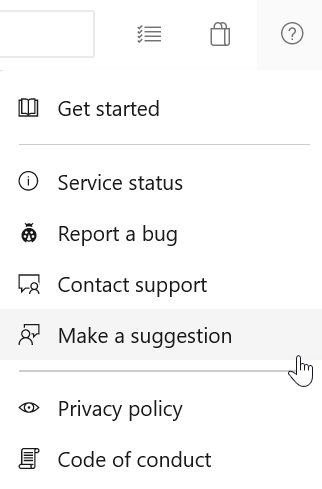General - Sprint 153 Update
Features
- Changes to Azure DevOps IP address ranges
- Auditing public preview
- Manage security groups and permissions from the command line
Changes to Azure DevOps IP address ranges
We are performing a front-end routing migration that will increase availability and decrease latency. As part of this migration, our IP address space will change. If you are currently using firewall rules to allow traffic to Azure DevOps, please be sure to update these rules to account for the new IP ranges.
IPv4 ranges
- 13.107.6.0/24
- 13.107.9.0/24
- 13.107.42.0/24
- 13.107.43.0/24
IPv6 ranges
- 2620:1ec:4::/48
- 2620:1ec:a92::/48
- 2620:1ec:21::/48
For more details about this update, see the blog post with the announcement here.
Auditing public preview
We are excited to announce that auditing for Azure DevOps is now available for all organizations as a public preview!
Auditing will log changes that occur throughout an Azure DevOps organization. When an auditable event occurs, a log entry is recorded. Some examples of audit events include: a Git repository is created, permission changes, resource deletion, code download, accessing the auditing feature, and much more.
The audit events will have information such as IP, who caused the event to be logged, what happened, and other useful information that can help you answer who, what, when, and where questions.
Note
Audit events will be stored for 90 days. However, you can back up audit events to an external location via the auditing REST API to keep them for more than 90 days.
By default, only the project collection administrators can access the audit log. An administrator can grant separate permission to team members to access the audit logs. The auditing feature can be found under the Organizations settings. For more information, see our documentation.

Manage security groups and permissions from the command line
You can now manage security groups and permissions from the command line by using the az devops security permission commands. By using the commands, you can create scripts to manage permissions and standardize the process of creating security groups. In addition, you can use the commands to run reports to view a list of security groups and corresponding permissions.
For more details, see the command and its syntax and help documentation.
Next steps
Note
These features will roll out over the next two to three weeks.
Head over to Azure DevOps and take a look.
How to provide feedback
We would love to hear what you think about these features. Use the feedback menu to report a problem or provide a suggestion.

You can also get advice and your questions answered by the community on Stack Overflow.
Thanks,
Steven Borg
Feedback
Coming soon: Throughout 2024 we will be phasing out GitHub Issues as the feedback mechanism for content and replacing it with a new feedback system. For more information see: https://aka.ms/ContentUserFeedback.
Submit and view feedback for